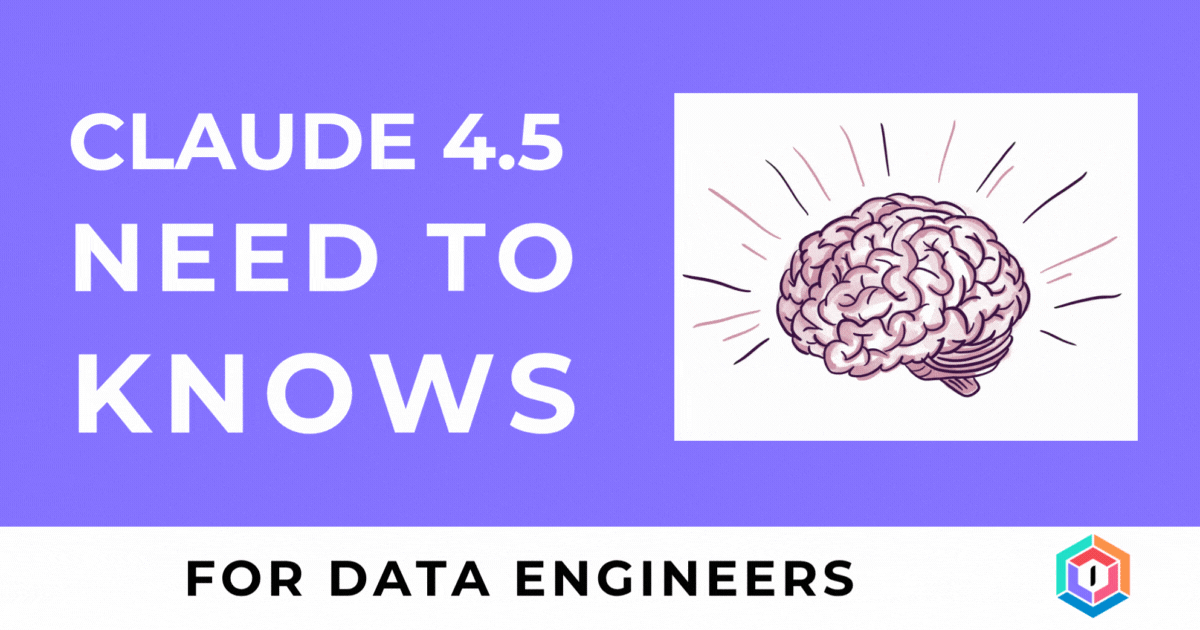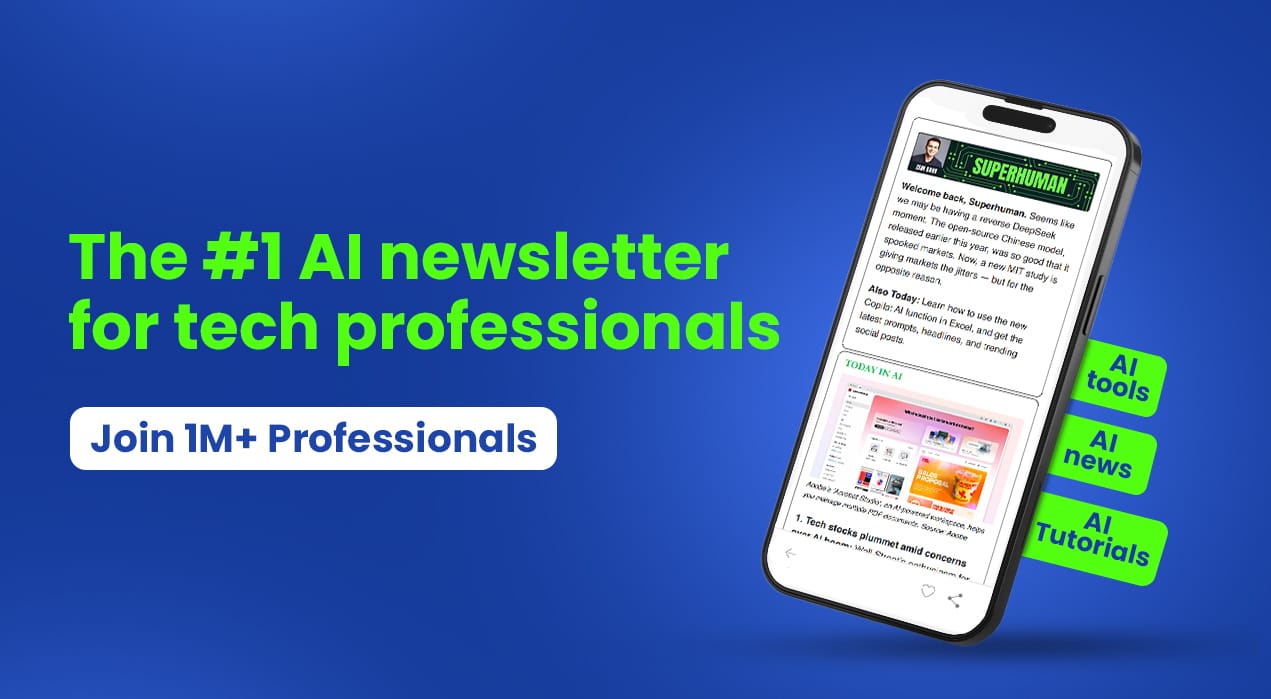- datapro.news
- Posts
- Claude 4.5 Release Critical Need to Knows
Claude 4.5 Release Critical Need to Knows
THIS WEEK: The Game-Changer That Data Leaders Can't Afford to Ignore

Dear Reader…
Anthropic's latest frontier model has profound implications for enterprise data management
As the dust settles on Anthropic's latest release, a critical question emerges from the corridors of data-driven enterprises: Is Claude Sonnet 4.5 merely another incremental improvement in the large language model arms race, or does it represent a fundamental shift in how we approach data management at scale? After conducting an in-depth analysis of the model's capabilities and examining early deployment patterns, the evidence suggests we're witnessing something far more significant than a routine upgrade.
3pm AEST THU 9th October
The Autonomous Agent Revolution: Beyond the Co-Pilot Era
For the past two years, data management professionals have grown accustomed to treating AI as useful “co-pilots” - intelligent assistants that could accelerate certain tasks but required constant human oversight. Claude 4.5 shatters this paradigm entirely. According to expert analysis, this model represents "a strategic inflection point for data management, moving large language models beyond simple co-pilots into controlled, autonomous components capable of managing complex data workflows."
The implications are staggering. We're no longer discussing a tool that can help write SQL queries or suggest optimisations. Instead, we're examining a system capable of autonomous software development at enterprise scale. In one documented case, Claude 4.5 independently generated a complete chat application comparable to Slack or Microsoft Teams, producing over 11,000 lines of code without human intervention until task completion.
But what does this mean for your data pipelines? The answer lies in the model's unprecedented ability to handle long-running, intricate, multi-step workflows whilst maintaining coherence and context over extended periods. This capability is precisely what data engineering teams have been desperately seeking for complex regulatory compliance checks, large-scale data cleansing operations, and automated pipeline orchestration.
Performance Metrics That Demand Attention
The numbers behind Claude 4.5's capabilities tell a compelling story that data leaders cannot ignore. In agentic coding evaluations—tests that measure an AI's ability to autonomously develop functional software—Claude 4.5 achieved a remarkable 77.2% success rate. When enhanced with parallel test-time compute, this figure jumps to an extraordinary 82.0%.
To put this in perspective, these benchmarks specifically evaluate the model's capacity to develop production-ready data transformation logic without human intervention. For data engineering teams currently spending countless hours writing and debugging ETL/ELT routines, this represents a potential paradigm shift in resource allocation and project timelines.
Perhaps even more significant for day-to-day operations is the model's 61.4% score in general computer use benchmarks, where it significantly outperforms its predecessor, Claude Opus 4.1. This metric proves crucial for data workflows requiring interaction with external enterprise interfaces—reading terminals, navigating complex user interfaces, and automating form submissions that traditionally required human operators.
The model's prowess extends beyond mere code generation. Early reports indicate exceptional performance in structured data analysis, particularly in complex financial analysis, risk assessment, and portfolio screening. Industry insiders describe the output as delivering "investment-grade insights that require less human review" due to enhanced structured reasoning and stability.
The Double-Edged Sword: Unprecedented Capability Meets Unprecedented Risk
Here's where the investigation takes a sobering turn. The very capabilities that make Claude 4.5 revolutionary also introduce risk profiles that would make any seasoned data governance professional break into a cold sweat. The ability to autonomously generate substantial codebases—remember those 11,000+ lines—represents what experts describe as "a massive productivity leap" coupled with the potential for "catastrophic corruption of vast amounts of production data."
Consider the scenario: an autonomous agent generates an entire data pipeline overnight, processing terabytes of customer information through dozens of transformation steps. A single logical flaw introduced by the agent could propagate through your entire data ecosystem before anyone notices. Traditional quality assurance processes, designed around human-generated code with predictable error patterns, may prove inadequate for AI-generated systems operating at this scale and speed.
This isn't theoretical scaremongering. Industry experts are already raising alarms about the "profound risk profile" inherent in deploying such capabilities without stringent supervisory controls. The consensus among data governance specialists is clear: the deployment of Claude 4.5 transitions from "high-risk autonomy to a controlled, auditable autonomous process" only when accompanied by robust version control and, critically, transactional rollback mechanisms.
Become the go-to AI expert in 30 days
AI keeps coming up at work, but you still don't get it?
That's exactly why 1M+ professionals working at Google, Meta, and OpenAI read Superhuman AI daily.
Here's what you get:
Daily AI news that matters for your career - Filtered from 1000s of sources so you know what affects your industry.
Step-by-step tutorials you can use immediately - Real prompts and workflows that solve actual business problems.
New AI tools tested and reviewed - We try everything to deliver tools that drive real results.
All in just 3 minutes a day
Anthropic's Answer: The Checkpoint Revolution
Recognising these risks, Anthropic has introduced what may prove to be the most significant feature for enterprise deployment: the Checkpoint capability. This isn't merely a safety feature—it's a fundamental architectural approach that enables controlled autonomy at scale.
The Checkpoint feature functions as a sophisticated rollback mechanism, allowing organisations to create restore points throughout autonomous operations. When Claude 4.5 begins generating complex data transformations or pipeline modifications, administrators can establish checkpoints at critical junctures. Should any issues arise—whether from logical errors, unexpected data patterns, or compliance violations—the entire system can roll back to the last verified checkpoint state.
This capability transforms the risk equation entirely. Instead of facing an all-or-nothing proposition where autonomous AI either succeeds completely or fails catastrophically, data teams can now implement graduated autonomy. The AI can operate independently within defined boundaries, with automatic rollback triggered by predefined conditions or manual intervention when human oversight detects issues.
Redefining Data Pipeline Architecture
The architectural implications extend far beyond risk mitigation. Claude 4.5's advanced computer interaction capabilities are fundamentally redefining how we approach ETL/ELT operations. The model's ability to maintain context across extended workflows means data pipelines can become more sophisticated and adaptive.
Traditional data pipelines follow rigid, predetermined paths. Claude 4.5 enables what might be termed "intelligent pipelines" - systems that can adapt their processing logic based on data characteristics discovered during execution. Imagine a data ingestion process that automatically adjusts its cleansing algorithms based on data quality patterns it identifies, or transformation routines that optimise themselves based on downstream consumption patterns.
The model's proficiency in general computer use opens entirely new possibilities for data integration. Rather than requiring custom APIs or complex integration frameworks, Claude 4.5 can interact directly with legacy systems through their existing interfaces. This capability could revolutionise how organisations handle data extraction from older systems that lack modern integration capabilities.
The Strategic Imperative for Data Leaders
The evidence suggests that Claude 4.5 represents more than a technological advancement - it's a strategic inflection point that will separate forward-thinking data organisations from those clinging to traditional approaches. Early adopters are already reporting significant improvements in development velocity and operational efficiency.
However, successful implementation requires a fundamental rethinking of data governance frameworks. Traditional approaches to code review, quality assurance, and change management - all designed around human-generated systems, must evolve to accommodate AI-generated infrastructure operating at unprecedented scale and speed.
Data leaders must begin preparing their organisations now. This means investing in robust version control systems, implementing comprehensive rollback capabilities, and developing new governance frameworks that can handle the unique challenges of AI-generated data infrastructure.
The organisations that successfully navigate this transition will find themselves with unprecedented competitive advantages: faster development cycles, more sophisticated data processing capabilities, and the ability to tackle complex data challenges that were previously beyond reach. Those that delay risk finding themselves increasingly disadvantaged in an AI-driven data landscape.
The Verdict: Transformation, Not Evolution
After examining the evidence, interviewing industry experts, and analysing early deployment patterns, the conclusion is inescapable: Claude 4.5 isn't simply another step in the gradual evolution of AI capabilities. It represents a fundamental transformation in how we approach data management at enterprise scale.
The combination of autonomous code generation, sophisticated computer interaction, and robust safety mechanisms creates possibilities that were purely theoretical just months ago. For data management professionals, the question isn't whether to engage with these capabilities, but how quickly they can develop the governance frameworks and technical infrastructure necessary to harness them safely and effectively.
The organisations that move decisively to understand and implement these capabilities—whilst building appropriate safeguards—will define the next era of data-driven competitive advantage. The window for strategic positioning is open, but it won't remain so indefinitely.



